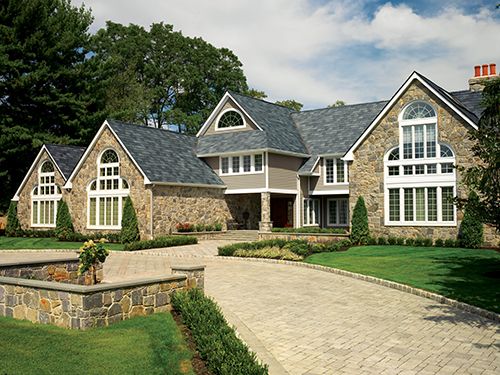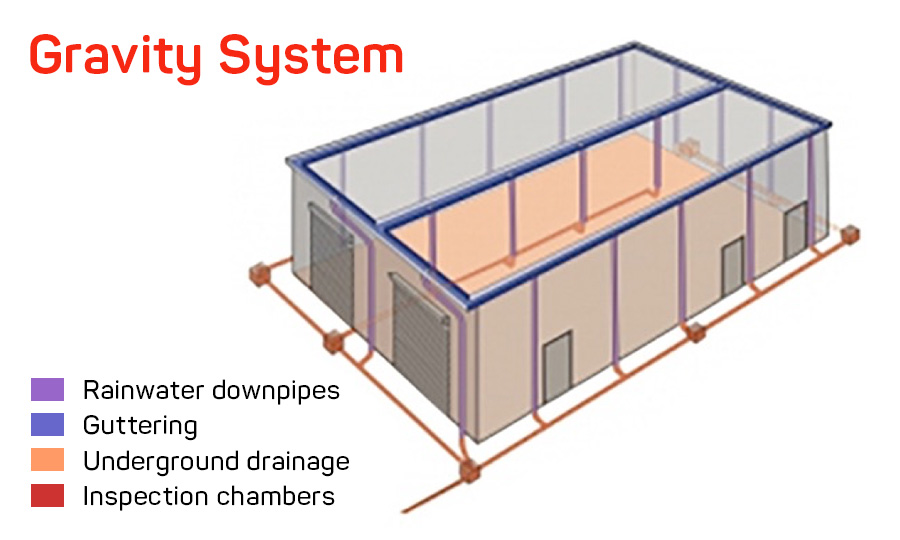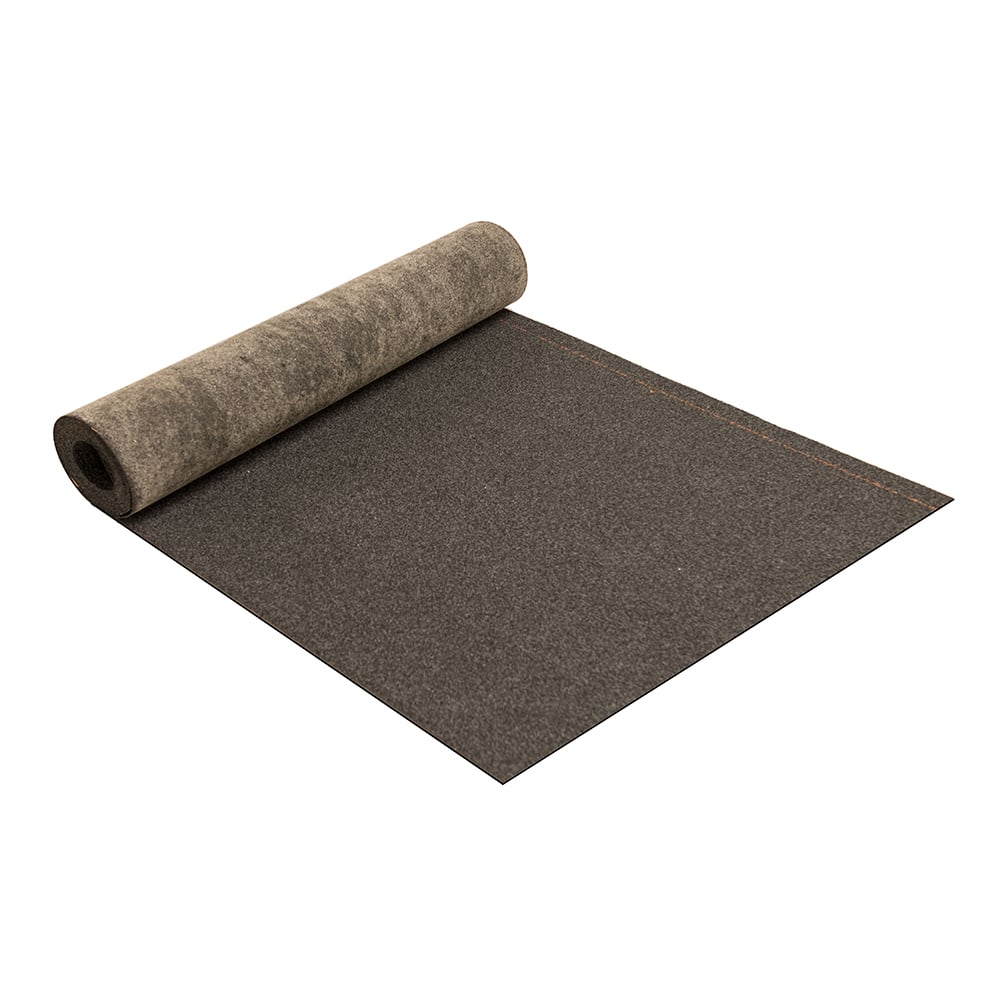
A roof's slope describes the degree to which it is slanted. A steep slope will have a slope of at least one-third. However, it is possible to be steeper. A typical steep-sloped roofing will have a pitch between nine and twelve inches. Additional fasteners may be required. More information about roof slopes can be found here. Here are a few examples.
The International Residential Code has requirements regarding the types and styles of roofing materials. These guidelines also include the minimum roof slope requirements for different types. The table below lists the minimum slope for each type. This table comes from the model International Building Code, which is the basis of nearly every building code in the United States. To learn more about the types of roofing systems, see our article on determining roof slopes.

Your roof's slope should be no less than 2:12 to achieve the best aesthetic appeal. You can alter the slope depending on your local climate. The steeper the pitch, the lower the angle. For example, a roof that is four inches in slope would require a roof slope of at least two and one-half to three-and-a-half inches. In addition, a six-inch-sloped home will need a steeper pitch to provide proper insulation.
Low-pitch roofing is the best option for residential buildings. They are simple to install and provide excellent protection against UV rays. They are less likely to leak and therefore require regular inspections. If the roof slope is too steep, it is possible to repair it. For residential homes, the medium-sloped roof is the best choice. There are two kinds of flat-sloped roofs: low-sloped and high-sloped.
There are two main types of roofs: high-pitch or low-slope. The latter type is more beneficial for your home as it will shed water faster and snow less efficiently. A low-slope roof will let your home breathe better. But a steeper pitch roof is inappropriate for a covered porch. For the remainder of your roof, you should choose a more steep-pitch roof.

Leakage can occur in high-pitched roofs as well as low-pitch ones. These can be caused by temperature changes, sun exposure, and gradual sagging. Each year it is crucial to conduct a thorough inspection of low-pitch or higher-pitch roofs. Aside from fixing leaks, you should also pay attention to the drainage system. Each year, your roofing drainage system must be checked.
The type of roof you have depends on the slope of your home. You should choose a steeper roof if your home is very sloped. This roof will be more efficient but also more expensive. You should use a lower pitch roof for low-sloped roofing systems. There are many options when it comes to installing a steep-sloped metallic roof.
FAQ
You can live in a house while it is being renovated.
Yes, I can live in a house while renovating it
You can live in a house that is being renovated while you are renovating it. It depends on the length of the construction. If the renovation process takes less than 2 months, then your home can be lived in while it's being renovated. You cannot live in your house while the renovation process is ongoing if it lasts more than two years.
There are many reasons why you should not live at home during major construction projects. You might be hurt or even die from falling objects on the site. You could also suffer from noise pollution and dust caused by the heavy machinery used on the job site.
This is especially true if you live in a multi-story house. This is because the vibrations and sound created by construction workers could cause serious damage to your property.
As mentioned earlier, you will also have to deal with the inconvenience of living in a temporary shelter while your home is being renovated. This means that you won't have access to all the amenities that come with your own home.
As an example, your washer and dryer will be out of commission while they are being repaired. Additionally, the smell of paint fumes or other chemicals will be a constant annoyance as well as the banging sound made by workers.
All these things can lead to anxiety and stress in your family. It is therefore important to plan ahead so that you don't end up feeling overwhelmed by the situation.
To avoid costly mistakes, do your homework before you make any decisions about renovating your home.
You can also consider professional advice from a trusted contractor to ensure smooth running of your project.
Can I rent a dumpster?
A dumpster can be rented to dispose of your debris after you have completed your home renovation. Renting out a dumpster is an excellent way to keep your yard tidy and free from debris.
Is it better for floors or walls to be done first?
It's important to know what you want to accomplish before you start any project. It is essential to consider how the space will be used, who will use it, and why. This will help determine if flooring or wall coverings are best.
Flooring may be an option if you are planning to make an open kitchen/living room. Wall coverings can be used if the intention is to keep this area private.
Statistics
- It is advisable, however, to have a contingency of 10–20 per cent to allow for the unexpected expenses that can arise when renovating older homes. (realhomes.com)
- According to the National Association of the Remodeling Industry's 2019 remodeling impact report , realtors estimate that homeowners can recover 59% of the cost of a complete kitchen renovation if they sell their home. (bhg.com)
- On jumbo loans of more than $636,150, you'll be able to borrow up to 80% of the home's completed value. (kiplinger.com)
- The average fixed rate for a home-equity loan was recently 5.27%, and the average variable rate for a HELOC was 5.49%, according to Bankrate.com. (kiplinger.com)
- ‘The potential added value of a loft conversion, which could create an extra bedroom and ensuite, could be as much as 20 per cent and 15 per cent for a garage conversion.' (realhomes.com)
External Links
How To
What amount should I spend to restore my old house?
The cost to renovate your home will vary depending on how many rooms are being renovated, which type of renovations you do, where you reside, and whether or not you are hiring professionals. Depending upon the size of the renovation, the average cost ranges between $10,000 and $50,000.
If you are planning on selling your home after the renovation, it is likely that you will receive less than the market price if you do not account for the costs of repairs, improvements, and upgrades. It is possible to lose money if your home looks shabby before you sell. On the other side, if your home is in a good condition, you can get more money if you put in the effort.
These factors can help you make a decision about which projects to take on first.
-
Your budget. You can start small if you have limited funds. You can start small, for example, by tackling one room at a given time. For major renovations, you can either hire a contractor who specializes on kitchen remodeling or save money.
-
Your priorities. You decide what you are going to do with your home. One issue can become a major problem quickly, so it's important to choose a single area. For instance, if your roof leaks every time it rains, you might end up having to replace it sooner rather than later.
-
Your timeline. Consider your timeline. For example, if you're looking to buy a new place next year, you probably wouldn't want to install hardwood floors or replace your bathroom fixtures right away. For these types of updates, you may wait until your house is sold to make the necessary changes.
-
Your skills. If you are unable to do a certain task, get someone else to do it. If your carpentry skills don't allow you to build custom cabinets, then it might be possible to hire a cabinetmaker to help you.